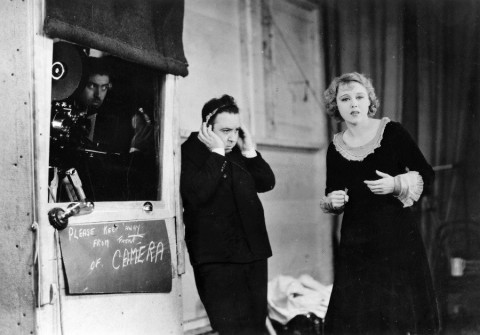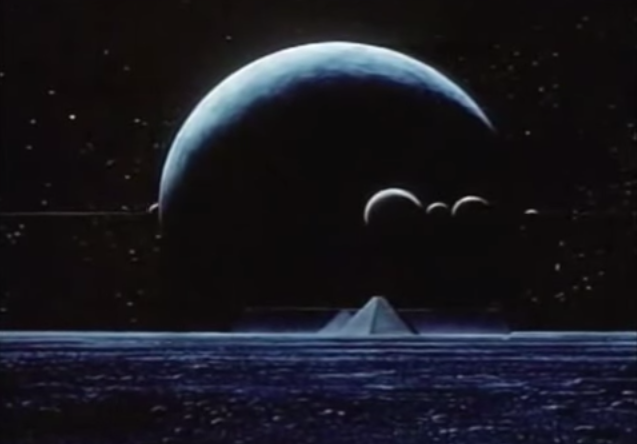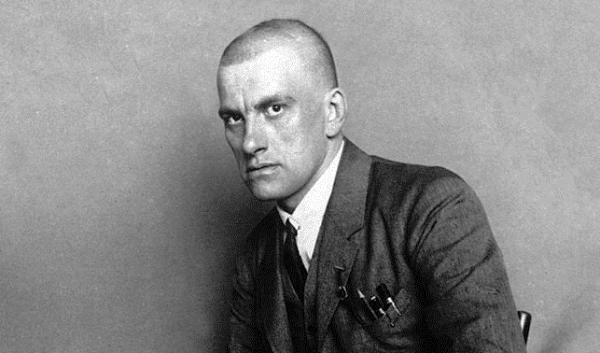David Lynch gets sound like few other directors. There’s an unforgettable scene in Twin Peaks: Fire Walk With Me where Laura Palmer leads her best friend Donna Hayward into what looks like a den of iniquity for lumberjacks. It’s filled with burly men and cheap women grinding to music blaring from the speakers. Lynch lets the music roll right over top the dialogue. It was a shocking choice back in 1992 but it was the right one. The banter was intentionally banal and obscure. The grotesque faces, the ominous crimson lighting and, most of all, that utterly hypnotic music are all you need to tell the story, creating a mood of dread and decadence. The scene is a stunning fusion of image, sound and editing in an otherwise flawed work.
Since that movie, Lynch became more and more interested in the possibilities of sound design. He eventually ditched film altogether for a career in music. So perhaps it shouldn’t come as a surprise that, along with creating at least three cinematic masterpieces, one of the most influential TV series ever made, and a string of television commercials, Lynch has also made a handful of music videos. You can watch them above and below.
Lynch’s first music video was for “I Predict” by the band The Sparks. It was made back in 1982 when MTV was still in its infancy and Lynch’s career was just taking off. Perhaps for that reason, the video has little of the stylistic obsessions that mark his later work. No weird flashing lights. No smoke or fire. No hollow-eyed models. Instead Lynch goes for a more direct, if silly, form of surrealism – a guy (band member Ron Mael) with a Hitler mustache in drag doing a striptease. Does it feel Lynchian? No, not really. But it’s still kind of distressing.
There are two videos for Chris Isaak’s “Wicked Games.” One, which was on heavy rotation on MTV, was shot by Herb Ritts and featured Isaak and supermodel Helena Christensen rolling around half-naked in the Hawaiian surf. And then there is Lynch’s video made as a tie-in to his strange, Wizard of Oz obsessed noir Wild at Heart, which has much less nudity – which is odd considering the movie is pretty much non-stop boinking. Instead, the video is pretty straightforward – just Isaaks and the band playing the tune intercut with shots from the flick.
After Mulholland Drive, Lynch turned his back on celluloid film, preferring the endless possibilities of digital. His enthusiasm for this new technology resulted in a flurry of projects including Dumbland, a crudely animated series presented in stark black and white. The video of Moby’s “Shot in the Back of the Head” is a moodier animated work but it is definitely in the same vein. Check it out above.
Lynch’s video for Nine Inch Nail’s “Came Back Haunted” can quite literally mess with your head. The piece is packed with flashing red and white lights and as a result comes with the following warning: “This video has been identified by Epilepsy Action to potentially trigger seizures for people with photosensitive epilepsy. Viewer discretion is advised.” You have been warned.
And finally here’s a music video for Lynch’s own song called appropriately “Crazy Clown Time.” Not only is the video a catalogue Lynch’s obsessions – Americana, naked women, fire – but it also features Lynch singing, who, after a bunch of effects, sounds like a castrated Keebler Elf.
Related Content:
David Lynch’s Unlikely Commercial for a Home Pregnancy Test (1997)
David Lynch Teaches You to Cook His Quinoa Recipe in a Weird, Surrealist Video
What David Lynch Can Do With a 100-Year-Old Camera and 52 Seconds of Film
Jonathan Crow is a Los Angeles-based writer and filmmaker whose work has appeared in Yahoo!, The Hollywood Reporter, and other publications. You can follow him at @jonccrow. And check out his blog Veeptopus, featuring lots of pictures of badgers and even more pictures of vice presidents with octopuses on their heads. The Veeptopus store is here.




